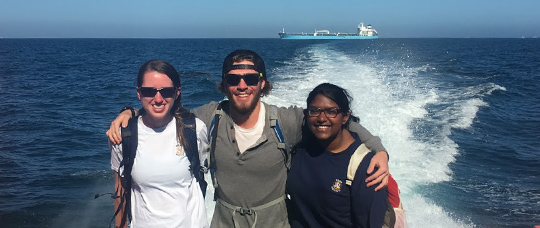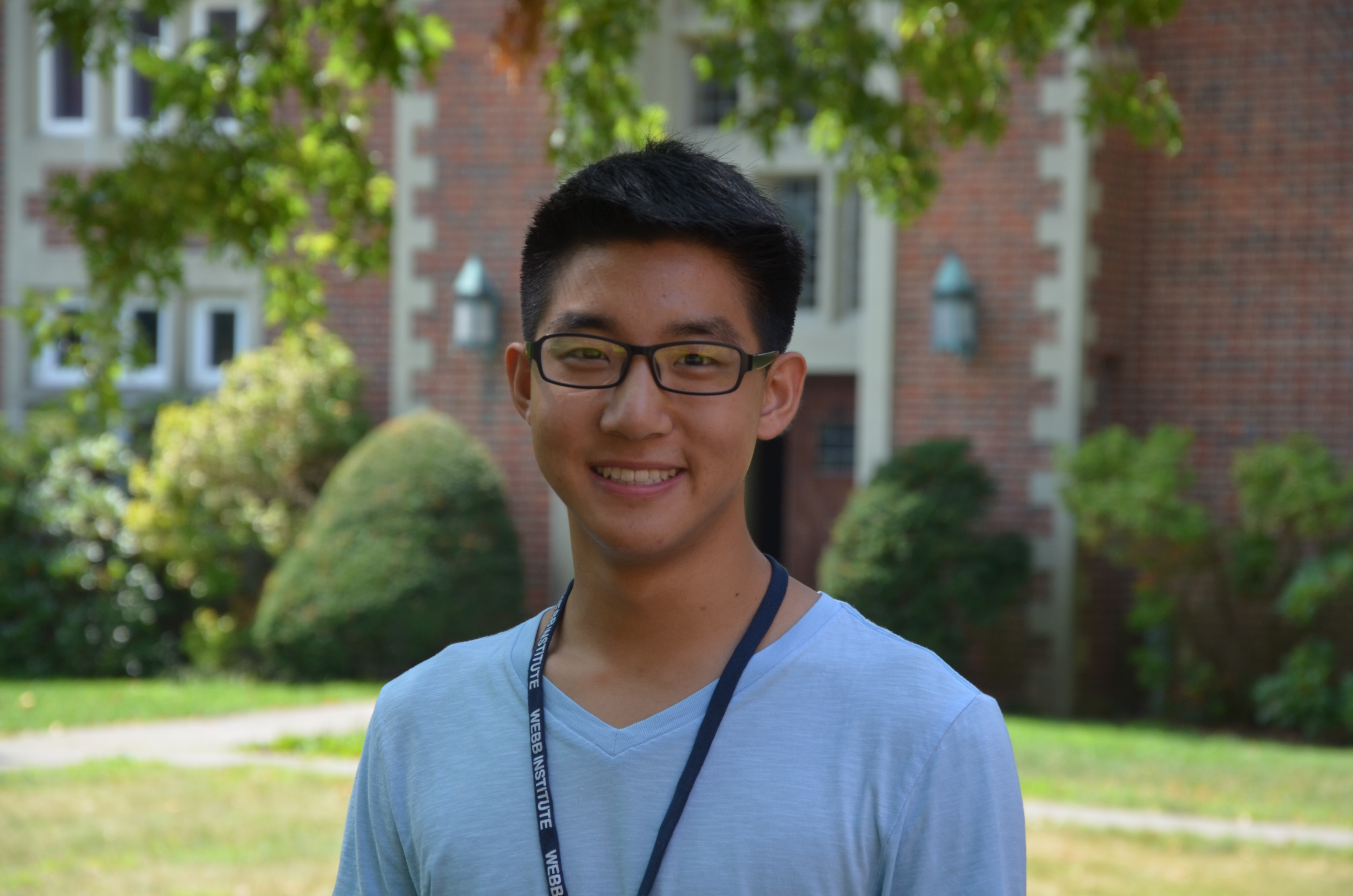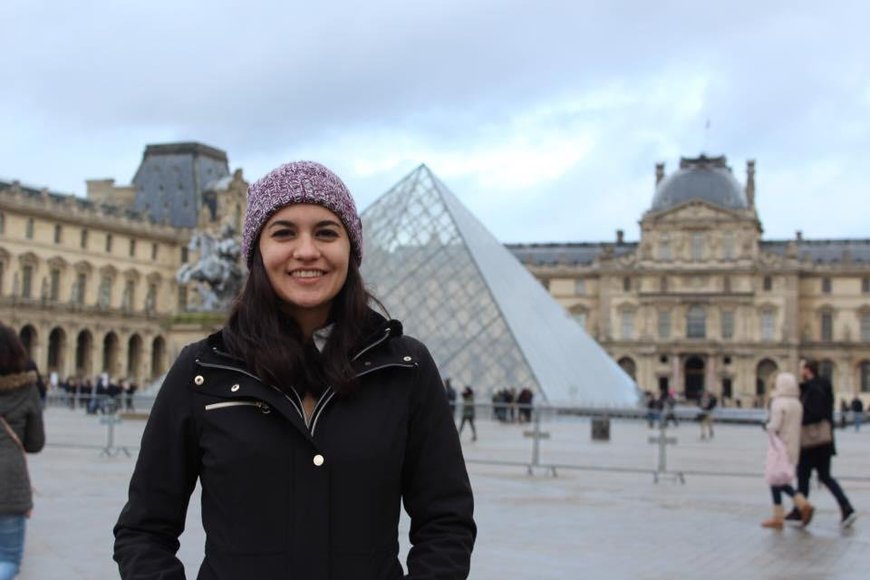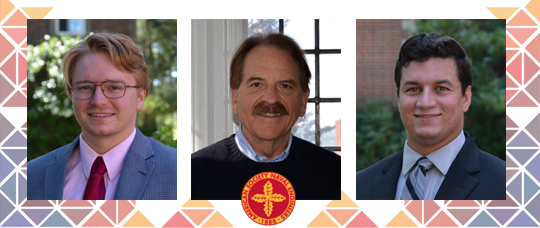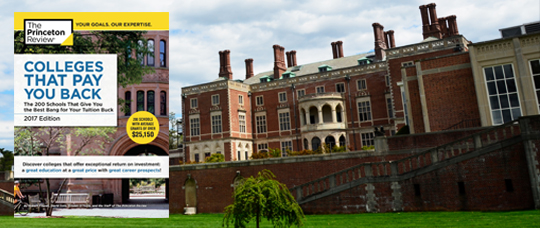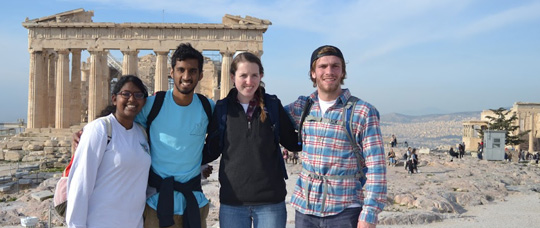4aBetterBusiness Founder, President Paul Vragel ’72 to Deliver Monday Lecture at Webb
On Monday, March 6, 2017, Founder and President of 4aBetterBusiness Paul Vragel ’72 is scheduled to speak to students as part of Webb’s Monday Lecture Series. Vragel will address students on the topic, “Using Systems Engineering to Achieve Transformational Business Results.”
Based on transformational results achieved by 4aBetterBusiness in manufacturing, distribution and B2B services companies, the presentation will cover the core insights that enable transformational results, an example of systems engineering applied to a design and manufacturing company, implementation issues to ensure management and employee buy-in, tools that can be used immediately, and resources for further reference and investigation by the students.
Winter Work Blogs 2017
Read Student First-Hand Experiences
Jonathan Wang ’20
Jonathan Wang is documenting his first Winter Work term experience while working at SAFE Boats in Tacoma, Washington.
Ashley Dias, Muriel Weathers & Abashai Thomas ’19
Read about Ashley, Muriel, and Abashai’s Winter Work term experiences as they travel aboard the Maersk PEARY to Antarctica.
Check out photos of Bree’s experiences in Trieste, Italy as she works for Lloyd’s Register.
Webb Professor, Seniors to Present Paper at ASNE Day TSS 2017
Assistant Professor of Structural Engineering John C. Daidola, along with class of 2017 students Andrew M. Arnold and Michael J. Imbesi, have co-authored a paper entitled, “Trimaran Preliminary Structural Design Procedures for a Large High Speed Sealift Ship.” The paper will be presented at this year’s American Society of Naval Engineers Day, Technology, Systems & Ships on February 14, 2017 in Washington, D.C.
Structural design characteristics for a large high speed trimaran sealift ship are determined using the Lloyd’s Register Trimaran Rules. These are compared to characteristics determined utilizing a more traditional naval approach for monohulls and with a combination of naval and American Bureau of Shipping commercial criteria. The analysis also considers additional approaches for determining transverse hull loads and wet deck pressures by alternative procedures.
The research was sponsored by the Office of Naval Research under the ACCeSS University Consortium.
Webb Institute Featured in Princeton Review Book, “Colleges That Pay You Back: 2017 Edition”
Webb Institute is one of the nation’s best colleges for students seeking a superb education with great career preparation and at an affordable price according to The Princeton Review (www.princetonreview.com).
The education services company features the school in the 2017 edition of its just published book, Colleges That Pay You Back: The 200 Schools That Give You the Best Bang for Your Tuition Buck (Penguin Random House / Princeton Review Books, $21.99, Jan. 31). The company also posted its school profiles for this book and the book’s seven categories of ranking lists on its website at http://www.princetonreview.com/colleges-pay-you-back
 The Princeton Review chose the schools based on ROI (return on investment) ratings it tallied for 650 schools last year. The ratings weighted 40 data points that covered everything from academics, cost, and financial aid to graduation rates, student debt, and alumni salaries and job satisfaction. The Princeton Review editors culled data from the company’s surveys of administrators and students in 2015-16 and from PayScale.com’s surveys of school alumni conducted through April 2016.
The Princeton Review chose the schools based on ROI (return on investment) ratings it tallied for 650 schools last year. The ratings weighted 40 data points that covered everything from academics, cost, and financial aid to graduation rates, student debt, and alumni salaries and job satisfaction. The Princeton Review editors culled data from the company’s surveys of administrators and students in 2015-16 and from PayScale.com’s surveys of school alumni conducted through April 2016.
“We highly recommend Webb Institute, and all of our Colleges That Pay You Back schools. They stand out not only for their outstanding academics but also for their affordability via comparatively low sticker prices and /or generous financial aid to students with need – or both,” said Robert Franek, The Princeton Review’s Senior VP/Publisher and lead author of the book. “Students at these colleges also have access to extraordinary career services programs from their freshman year on, plus a lifetime of alumni connections and post-grad support.”
In the book’s profile of Webb Institute, The Princeton Review editors praise the school for its “unrivaled reputation within the marine industry” and quote from Webb Institute students the company surveyed who described the college as “THE college for Naval Architecture, where job offer is basically guaranteed after graduating.” It also cites PayScale.com figures reporting Webb Institute graduates with at least a bachelor’s degree have a median starting salary of $65,400 and median mid-career salary of $105,000.
The book also has an introductory section identifying “Great Schools for the Highest Paying Majors” and tips for getting financial aid, scholarships and grants from colleges. In addition to the profiles of 200 (73 public and 127 private) tuition-charging schools, profiles of nine tuition-free schools are in the book.
The Princeton Review is also known for its school profiles and rankings in its annual book, The Best 381 Colleges, published in August, its Best Business Schools and Best Law Schools web features, published in October.
About Webb Institute
Founded in 1889 by William H. Webb, Webb Institute is a top-ranked undergraduate college specializing in Naval Architecture and Marine Engineering. Webb provides full-tuition scholarships to all admitted students; admission to Webb is extremely competitive with a maximum of 28 students being accepted into the program each year. Webb Institute prides itself on a 100% placement rate for graduates who are highly sought after by all segments of the marine industry. Webb Institute is located on a beautiful, waterfront campus in Glen Cove, NY, on the North Shore of Long Island. For more information, visit www.webb.edu.
About The Princeton Review
The Princeton Review is a leading tutoring, test prep and college admission services company. Every year, it helps millions of college – and graduate school-bound students achieve their education and career goals through online and in person courses delivered by a network of more than 4,000 teachers and tutors, online resources, and its more than 150 print and digital books published by Penguin Random House. The Princeton Review is headquartered in New York, NY, and is an operating business of Match Group (NASDAQ: MTCH). For more information, visit www.princetonreview.com. Follow the company on Twitter @theprincetonrev.
Winter Work Term 2017
Our Winter Work term is a mandatory program for all students that takes place every January and February where our students spread out across the globe to gain real life working experience.
Freshmen work alongside ship fitters and welders in shipyards. Sophomores serve as student observers aboard ocean going ships to gain hands-on understanding and appreciation for the relationships between the marine environment, the shipping industry, the ship’s operators, and the ship’s design. Juniors and seniors network and apply themselves in design and engineering offices around the world.
Read our students’ first-hand experiences!
See where our Webbies are this Winter Work Term!
List of Winter Work term companies and their locations:
Class of 2017
| Austal | Mobile | AL |
| BMT Designers & Planners | Alexandria | VA |
| Bristol Harbor Group, Inc. | Bristol | RI |
| Donjon Marine, Inc. | Hillside | NJ |
| General Dynamics Electric Boat | Groton | CT |
| Glosten, Inc. | Seattle | WA |
| Herbert-ABS Software Solutions LLC | Alameda | CA |
| Jensen Maritime Consultants | Seattle | WA |
| LiquidPiston, Inc. | Bloomfield | CT |
| Lloyd’s Register | Trieste | Italy |
| Navatek Ltd. | Honolulu | HI |
| Navatek Ltd. | S. Kingstown | RI |
| Shipwright LLC | Ft Lauderdale | FL |
| STX France | Saint-Naizere | France |
| Webb Institute | Glen Cove | NY |
| Westport Shipyard | Port Angeles | WA |
Class of 2018
| Alion Science & Technology | Alexandria | VA |
| Applied Physical Sciences Corp. | Groton | CT |
| Austal | Mobile | AL |
| Eagle Bulk Shipping, Inc. | Stamford | CT |
| Foss Maritime Company | Seattle | WA |
| General Dynamics NASSCO | San Diego | CA |
| Gilbert Associates, Inc. | Braintree | MA |
| Hammonia Reederei | Hamburg | Germany |
| Herbert Engineering Corp. | San Francisco | CA |
| Incat Crowther | Lafeyette | LA |
| The Interlake Steamship Company | Middleburg Heights | OH |
| Metal Shark Aluminum Boats, LLC | Lafayette | LA |
| Huntington Ingalls Newport News Shipyard | Newport News | VA |
| SAFE Boats International, LLC | Tacoma | WA |
| Ship Architects, Inc. | Mobile | AL |
| Vard Marine, Inc. | Houston | TX |
Class of 2019
| Crowley Maritime | Jacksonville | FL |
| MaranGas Maritime | Athens | Greece |
| Maersk Lines, Ltd. | Norfolk | VA |
| Matson | Oakland | CA |
| Stolt Tankers | Rotterdam | The Netherlands |
Class of 2020
| Austal | Mobile | AL |
| Bay Ship & Yacht Co. | Alameda | CA |
| Bollinger Shipyard | Lockport | LA |
| Fincantieri Marinette Marine | Marinette | WI |
| General Dynamics Electric Boat | Quonset Point | RI |
| Metal Shark Aluminum Boats | Jeanerette | LA |
| M. Rybovich & Sons | Palm Beach Gardens | FL |
| Philly Shipyard | Philadelphia | PA |
| SAFE Boats International | Tacoma | WA |
| Vigor Fab | Ketchikan | AK |
| Vigor Fab | Portland | OR |
| Westport Yachts, LLC | Port Angeles | WA |
| Westport Yachts, LLC | Westport | WA |


